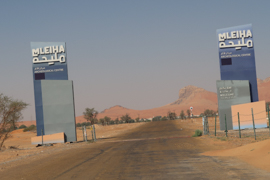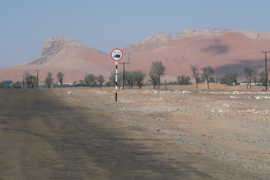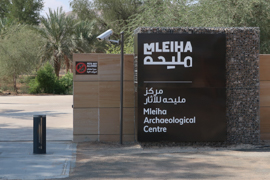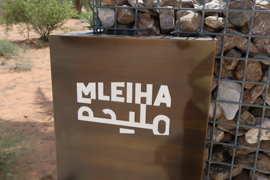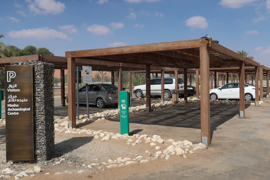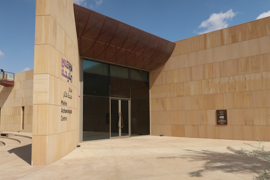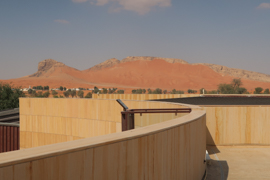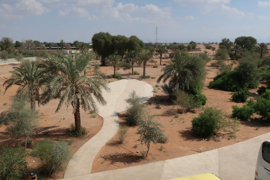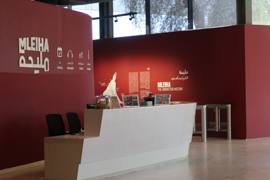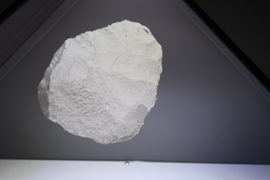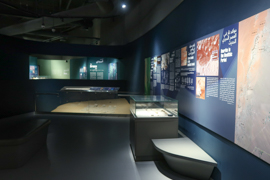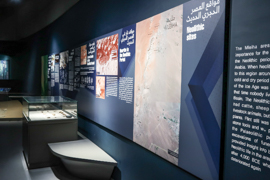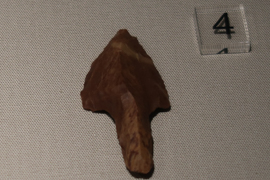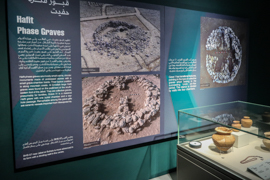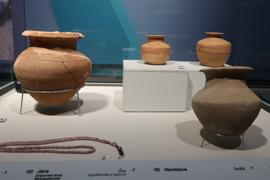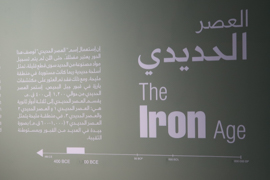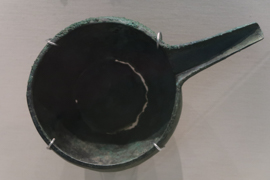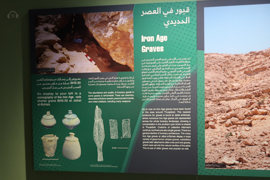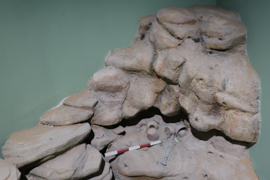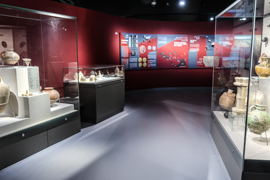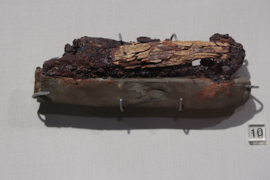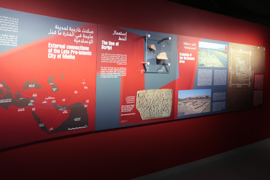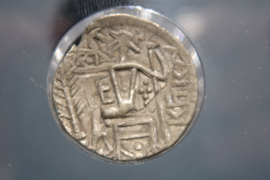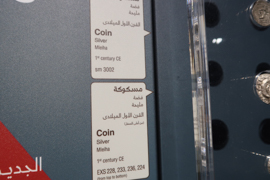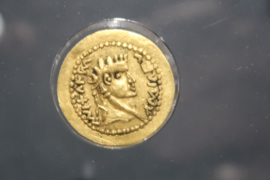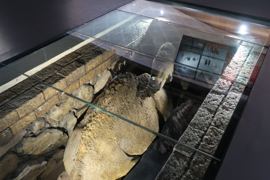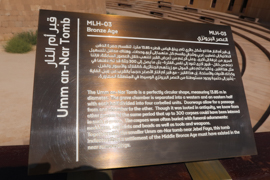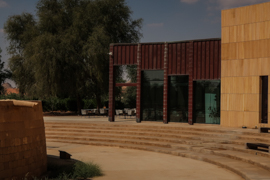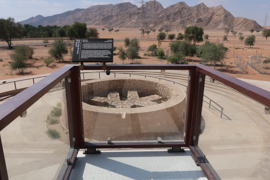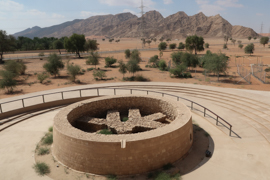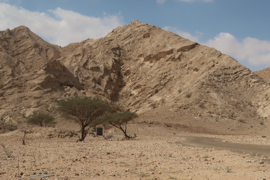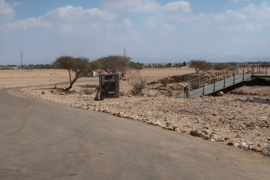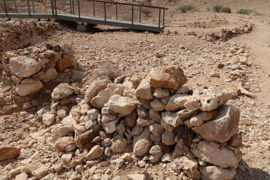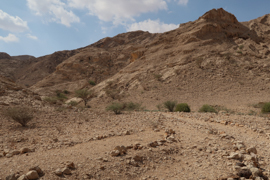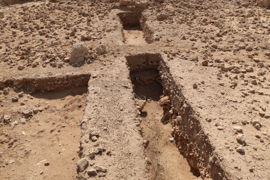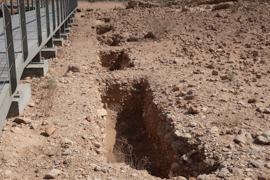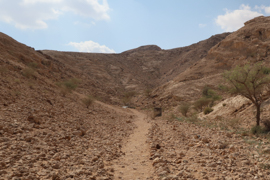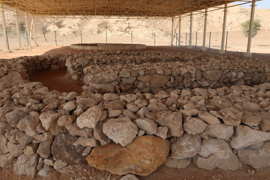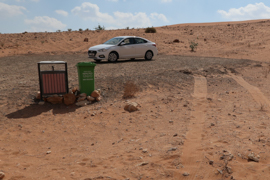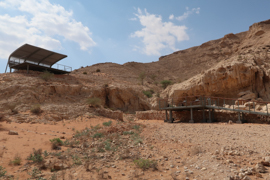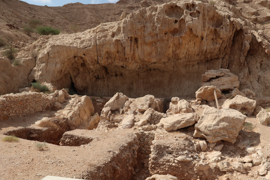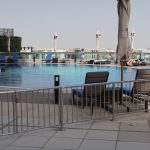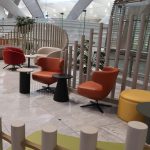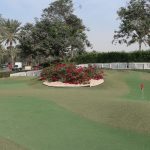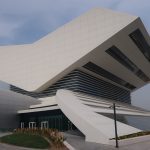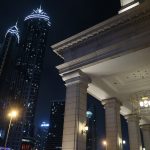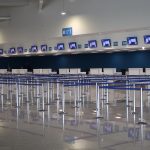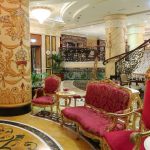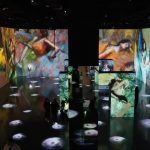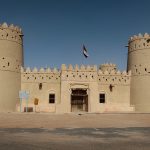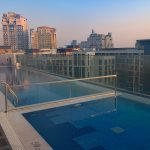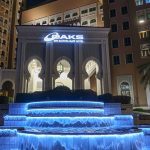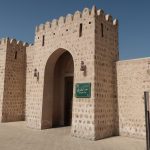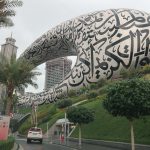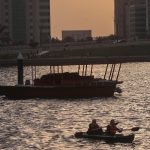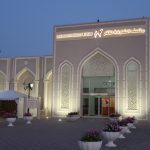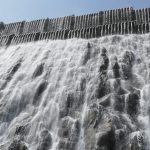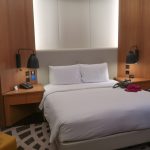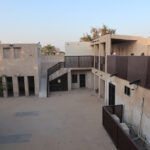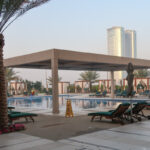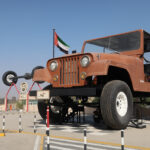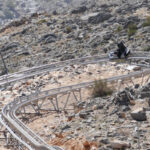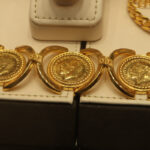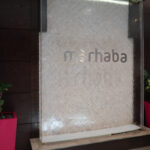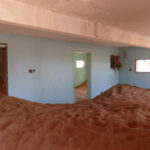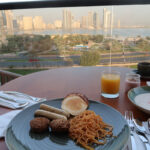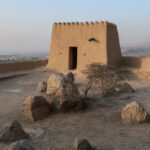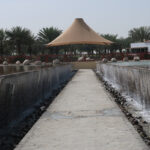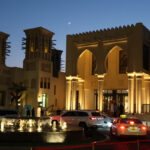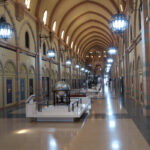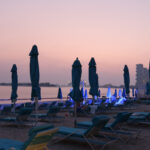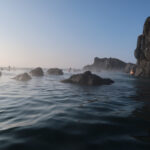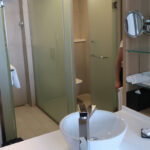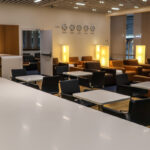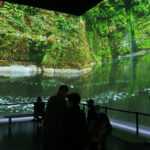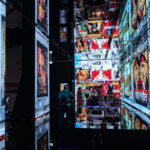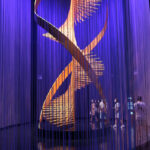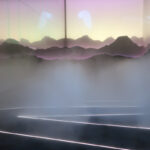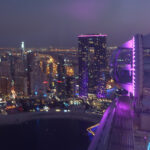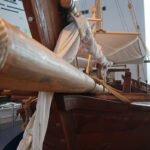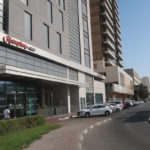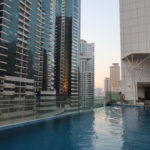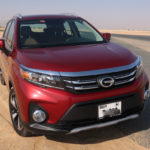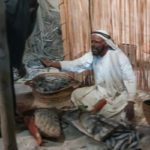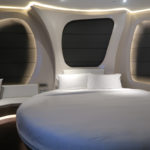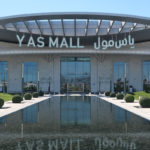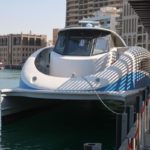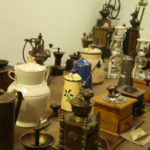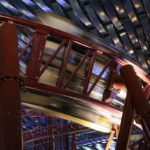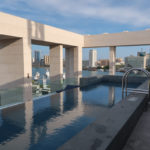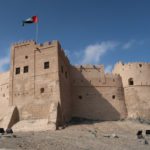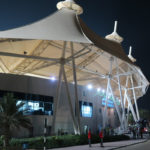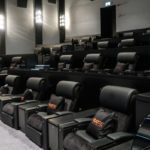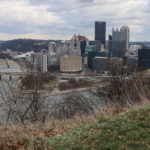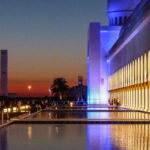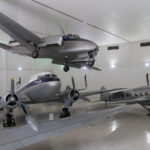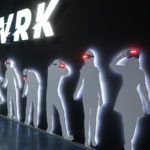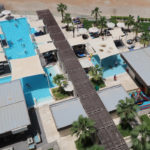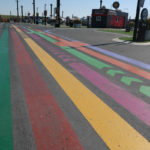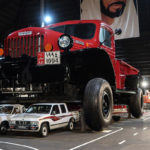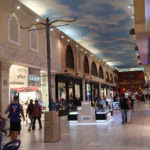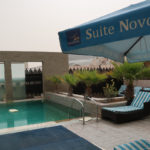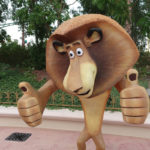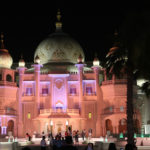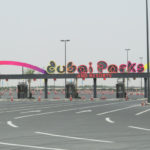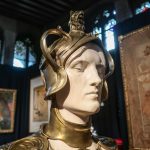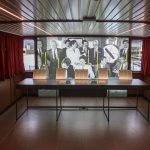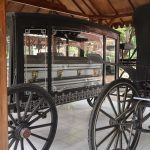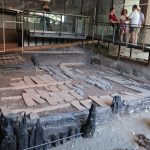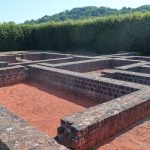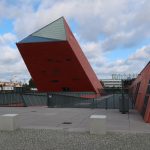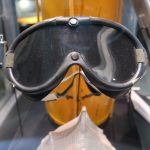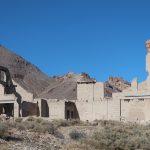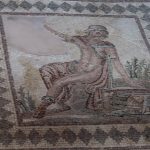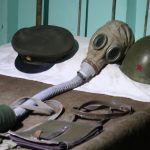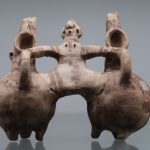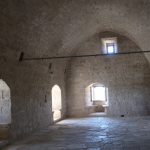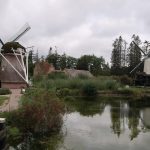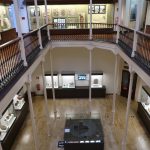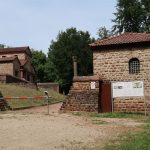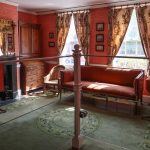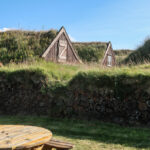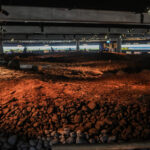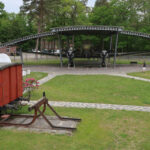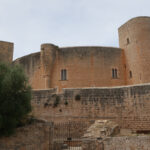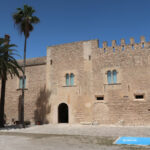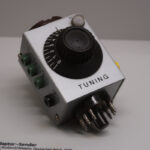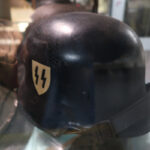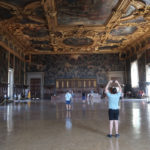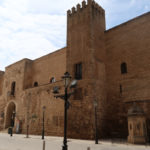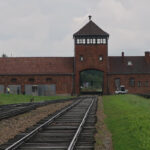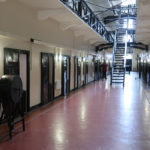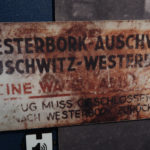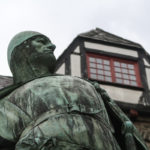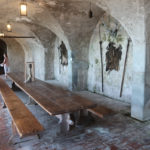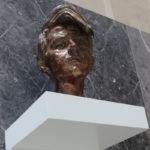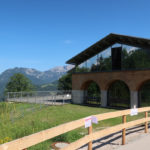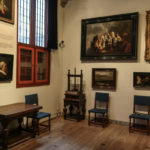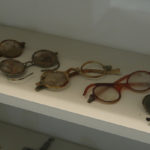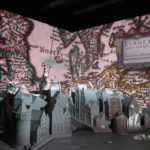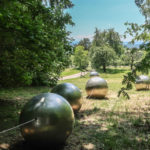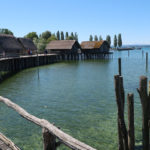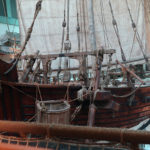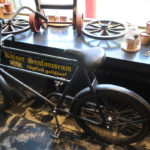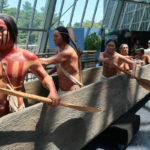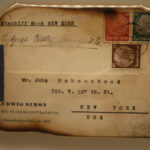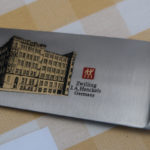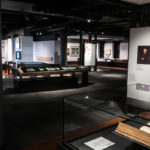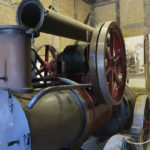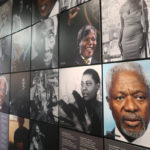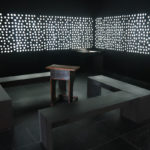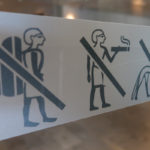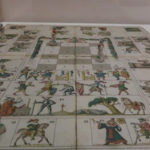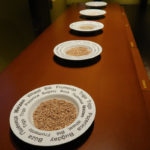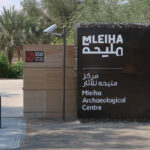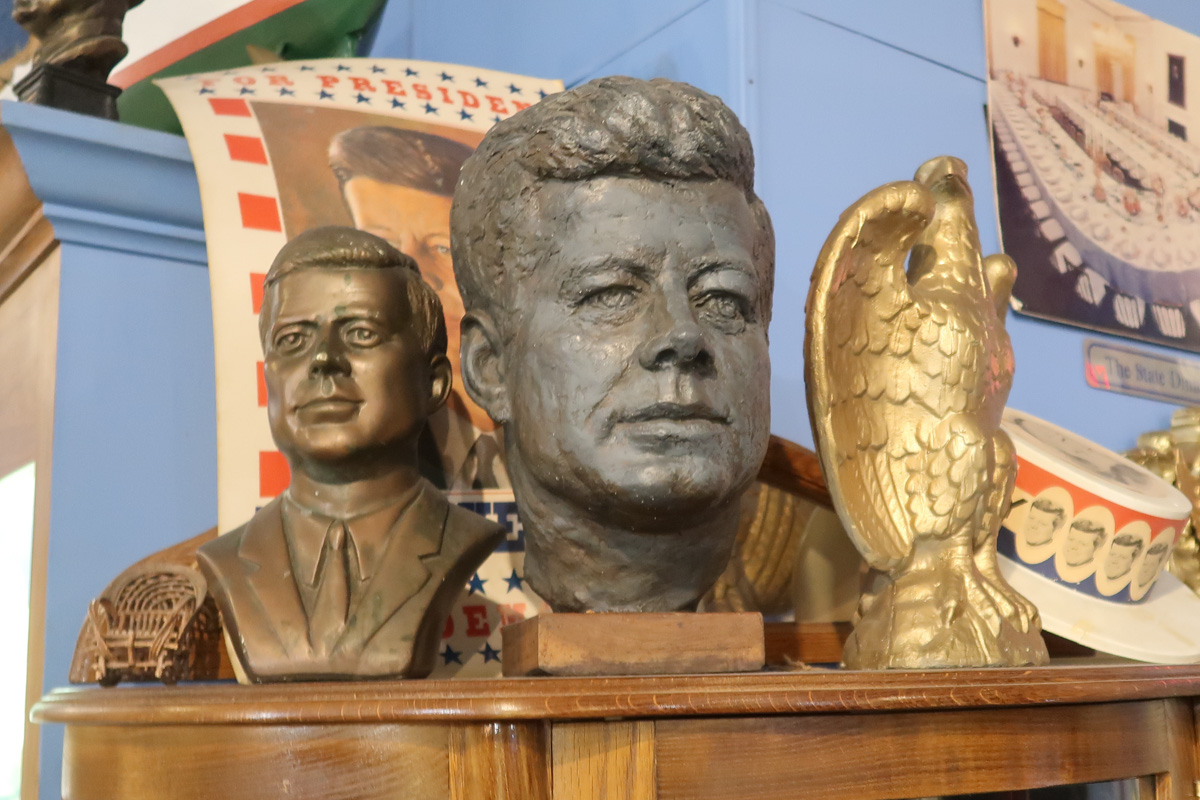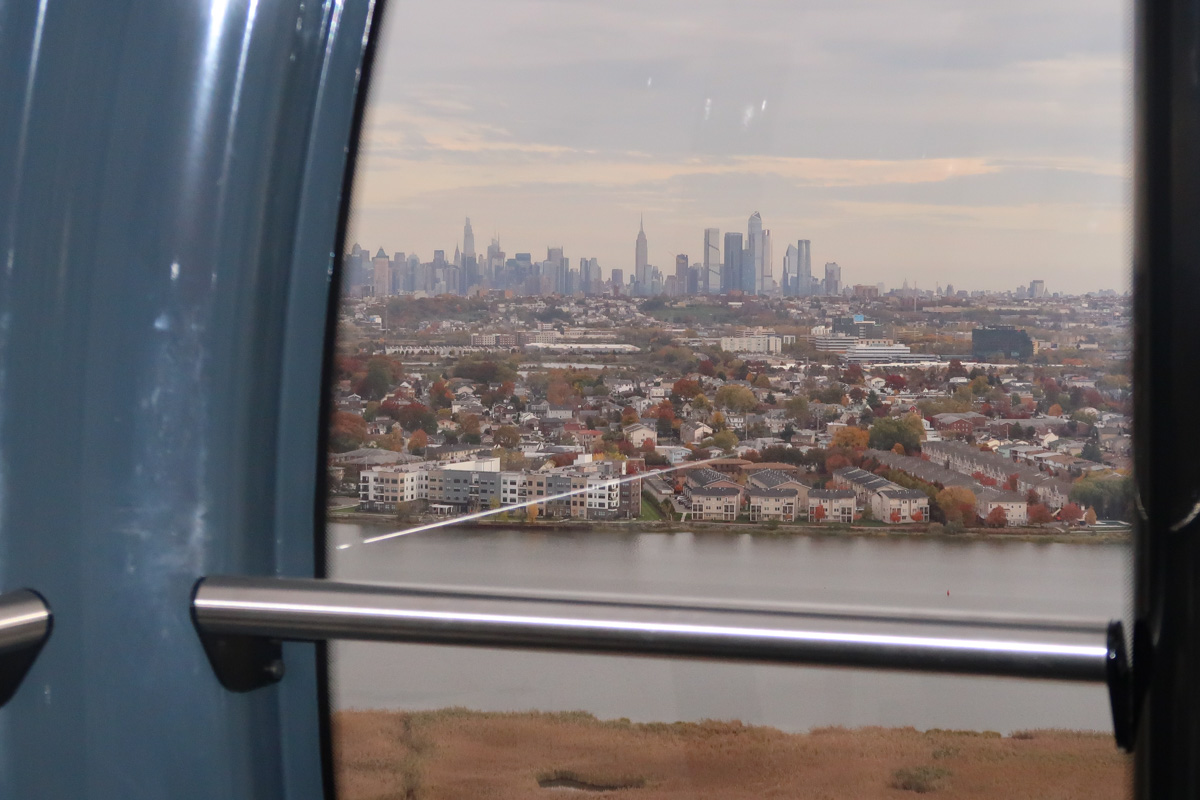Mleiha Archaeological Center
25 AED
Flyctory.com Pros
- Learning about beginning of settling in Gulf Region
- Several interesting excavation sites
- Very modern museum / exhibition center
Flyctory.com Cons
- Remote location (rental car recommended)
When you visit Dubai or the United Arab Emirates in general, you likely think about the parks, skyscrapers, sun and fun. In fact, the area is also quite interesting from a historic perspective. Some places in Dubai and Abu Dhabi remind of the cultural heritage of the Gulf Region. However, as a stop-over on a trip to the East Coast of the Emirates, I had a visit at Mleiha Archaeoligical Center – I feel that this is really a place worth sharing with you.





Mleiha Archaeological Center – Location & Admission
Mleiha – or Mileiha / Maleha, how it is sometimes written, is a village in the middle of the desert. It is part of the Shajah Emirate and located right at the E102, the Sharjah – Kalba Road and the E55. I can really recommend the drive as well. There are not too many other attractions around. The archaeological site is already quite close to the mountains, where you can explore some wadis, for example, though. Distance from Burj Khalifa is some 80 kms / one hour so that I would recommend a rental car. The site is however also organizing a driver service.
I would recommend to visit the sites during the opening times of the Archaeological Center, which is a perfect start to visit the sites. In general, the areqa is quite hilly and contains some caves – thus I did not visit all outdoor sites. The museum itself is air-conditioned, but the outdoor parts may be bothering, depending on the weather. Opening times of the exhibition are 9:00 to 19:00 hrs during the week. The museum closes at 21:00 hrs. Thursday and Friday. Adult admission is 25 AED, roughly 6 Euro.




Mleiha Archaeological Center – The Museum
The impressive builing of the Archaeological Center is located right next to the likely most important historic site, the Mleiha Tomb. There is sufficient parking avialable nearby. The building is very modern and you can also walk up the roof and enjoy the view from the roof to over the area and the tomb.








The exhibition is not overwhelmingly large, but it delivers all information on point you need to understand the importance of the site. For example, interactive screens educate you why people decided to settle in this place. The availability of water, but also the availability of protein due to the nearby mountains were two key factors, for example. A very interesting part of the exhibition is also how settling in the Gulf Region changed over time. There are, of course, some archaeological items as well.
















The museum illustrates the history of Mleiha and finally closes with the excavations and an explanation of the sites.














Mleiha Archaeological Center – Excavation Sites
The Umm an-Nar Tomb is the key site, which is really interesting to visit, after you have spent time in the museum (30 to 45 minutes).








Some of the other sites are a bit of remote, so I absolutely recommend to grab a map at the museum and explore the sites by (rental) car. Some of the places, especially caves, require easy hiking.






As you see on the pictures, you may be welcomed by donkeys or camels, but these natives are definitely friendly companions. The areas are well-explained. Next to the E55 North-to-South connection is the biggest site, the Mleiha Fort. The major sites are having a simple roof against the sun.


















Mleiha Archaeological Center – Services
The archaeological center also features a nice cafe, which felt to be very popular at the locals. The opening times are in line with the museum. There are a few souvenirs available as well.
Mleiha Archaeological Center – My View
I feel it is really a shame that most U.A.E. visitors at most explore the desert by an action-packed jeep tour over the dunes. Mleiha Archaeological Center is absolutely interesting – and it is also worth to enjoy the lovely nature of the U.A.E. mountains. The staff was really friendly and the museum was absolutely modern. I loved the visit there, so that I can definitely recommend it.
United Arab Emirates – More Postings
Here are all posting of related to the United Arab Emirates:

The final post of the year deals with nothing but the Best Ones. After I shared my Favorite Songs and Favorite Albums and EPs ...

During our stay in Dubai, my wife stayed during the New Year's Eve 2024 celebrations at the Hilton Dubai Al ...

In December 2024, my wife and I stayed had two nights at the Conrad Dubai. The Christmas decoration was lovely ...

During a trip in late 2024, I needed a one night stay close to Abu Dhabi Airport (AUH). I thus ...

I already took you to Jebel Jais twice. The mountain, which is holding the highest point of the United Arab ...

As the Pearl Lounge in Abu Dhabi Airport (AUH) is contracted to Qatar Airways and Sri Lankan Airways, I visited ...

One of the hotels my wife and I stayed in for two nights in December 2024 in Dubai has been ...

The United Arab Emirates are developing that rapidly - any time you go there, there is something new (or something ...

Flying Eurowings in the A320neo from Cologne/Bonn (CGN) to Dubai World Central (DWC) did not only give me my first-ever ...

It is very hard to keep track of all the new attractions which pop up in Dubai. A place, which ...

Dubai is an entertainment city. It feels like you practically get anything in the city you like, as long as ...

In 2022, Dubai has opened a new educational facility. The Mohammed bin Rashid Library has become one of the most ...

Rather short-notice, my wife and I changed our travel plans for New Year's Eve 2024 and decided to stay in ...

Dubai World Central (DWC), also Dubai Al Maktoum International, is Dubai's future hub in the making, according to the official ...

While quite a lot of traveling is ahead of me during the next weeks, November and December 2024 was rather ...

In the frequent traveler community, especially in and around Germany, the middle distance Eurowings flights gained quite some popularity. Flights ...

The Royal Rose Hotel in Abu Dhabi is one of the classic and traditional stays in the U.A.E. capital. The ...

The ARTE Museums are a franchise of modern, immersive art places. The exhibition has its origin in South Korea, where ...

On my multi-stop drip from Germany to Jakarta in Indonesia, I had one free day on the outbound leg in ...

While my 18th edition of the Food I Had Onboard just came with a limited number of trips rather widely ...

The very last hotel night on my mileage run to Jakarta and the Emirates was a stay I was really ...

Ibn Battuta Gate is not only right next to my favorite mall in Dubai, the Ibn Battuta Mall, but it ...

Dubai is not only a place where you run into people from all over the world, but also in hotel ...

I really like the museums in Sharjah. One of the museums I visited in the city right North of Dubai ...

The ring-shaped Museum of the Future has quickly become one of the most iconic structures in Dubai. Having opened in ...

A strike in Germany caused me to re-book my February 2024 flight to Dubai. Instead of Thursday morning, I landed ...

France, Tunisia, Saudi Arabia and Malaysia - I am just coming back from a massive aviation trip, which is the ...

After my recent experience with the Christmas celebrations at SeaWorld San Diego were rather disappointing, I felt to give the ...

I was so happy to be back in Abu Dhabi in February 2024. Especially due to the stricter Covid-19 restrictions ...

Calligraphy is a kind of graphic art which is very deeply linked to the Arabian culture. Thus, it is not ...

Home is where the heart is - I had the idea to this posting about my favorite cities of the ...

essAl Noor Island is located right inside Khalid Lake in Sharjah, which is also around the Al Montazah Parks amusement ...

While I generally enjoy being in the United Arab Emirates due to climate and cultural diversity, I especially have a ...

In general I feel that the East Coast of the United Arab Emirates has a lot more potential for visitors ...

One of the activities I can recommend most in Sharjah is going to a museum. I introduced you to quite ...

While Dubai and Abu Dhabi already attract masses of tourists, the North and East of the United Arab Emirates is ...

It took me quite a while to finally complete the review of the DoubleTree by Hilton Dubai Business Bay. My ...

During my visit of the Northern part of the United Arab Emirates in February 2022, my trip to Ras Al ...

I felt really happy to have a deeper view to the Northern and East parts of the United Arab Emirates ...

My February 2022 trip to the United Arab Emirates lead me to the Northern part of the country for the ...

National Emirati people love cars - and if they are close to the reigning families, they are typically also rather ...

When you think about the United Arab Emirates, you might not necessarily initially think of alpine coasters. However, I already ...

The Covid-19 situation limited my potential to travel between Dubai and Abu Dhabi during the last two years. One place ...

Regardless if you like Dubai or not, you just cannot argue that the landscape around the United Arab Emirates metropolis ...

For many Dubai tourists, especially first-timers, walking through the narrow streets of the Old Town and passing tons of jewelry ...

Flying back in the Finnair Business Class from Dubai International, Terminal 1, to Helsinki Airport (HEL) has not been the ...

The abandoned settlement part of Al Madam in the East parts of the Emirate of Sharjah has become a hidden ...

For the last two nights of my trip to the Northern United Arab Emirates, I chose to go for two ...

My trip to the United Arab Emirates in February 2022 majorly lead me to the Northern part of the country ...

Another time in the Emirates, another car rental - and another car rental review. In February 2022, I had a ...

I am not religious at all - but nonetheless, visiting the Quranic Park in Dubai was on my bucket list ...

Especially for tourists, Dubai rather means entertainment, luxury and posh shopping. Thus, having a boat ride in a swan-shaped pedal ...

The area around the world famous seven star hotel Burj al Arab (if someone is paying me a night there, ...

In quite some postings about the emirate North of Dubai, I already stated how much I value and enjoy the ...

Having a vacation at The Palm in Dubai is likely on the bucket list for many people worldwide. The artificial ...

Right in the Sharjah desert, there is a very interesting place to learn about the regional wildlife and natural history ...

It is time for the final posting of the years, simply named The Best Ones 2021. After looking into my ...

For our October 2021 visit of the Expo 2020 in Dubai, my wife and I stayed at the Avani Hotel ...

Watching Dubai from the (currently) world tallest building, the Burj Khalifa, just feels like one of the biggest must-dos for ...

While Lufthansa operated their flights from the Emirates Terminal 3 during the Covid-19 flight reductions, I was quite happy to ...

Even though I do have a couple of airport reviews on Flyctory.com, I so far missed a lot of the ...

Corn Flake, muesli, granola, any kind of flavored and sugared loops and many more - cereals are one of the ...

Two fun empires meet each other: on the one hand, there is Madame Tussauds, which seems to be creating wax ...

Even though I have a (low) status at Melia Hotels, my experience with the brand is rather mixed. The more, ...

The Sustainability district, which is marked in green on the Expo 2020 map, featured some really interesting pavilions during our ...

Al Forsan is one of the two smaller districts of the Expo 2020 ground. Apart from the 360 degrees Opera, ...

With a large concert stage and two main attractions on the ground, the Jubillee area on the Expo 2020 grounds ...

The Opportunity District, which is having the orange color coding on the map of the Expo 2020 grounds, is not ...

The Mobility District of the Expo 2020 was the last one my wife and I had a more intense visit ...

Delayed by one year due to Covid-19, Dubai hosts the Expo 2020, the World Exhibition in between 1st October 2021 ...

Some sort of appetizer what lies ahead: during the next days, I will start covering the Expo 2020 World Exhibition ...

A new attraction for the mega-city Dubai: in October 2021, the new Ain Dubai Ferris wheel finally started operations. Delayed ...

I already introduced you to the Sharjah Maritime Museum in a previous posting. Right next to this place, there is ...

As I said in other posting, I really enjoy being in Sharjah and feel the vibe of the city and ...

There are these moments in my traveler's life where I just feel I have to go for a certain thing ...

Most of the flights from Germany to Dubai lead to an arrival time in the United Arab Emirates at about ...

Sharjah is very often underestimated as a touristic destination. In fact, it offers some very interesting museum. The most outstanding ...

I never have been to the Atlantis The Palm in Dubai as a hotel guest - but, of course, it ...

Is that the future of dining? Robots creating your mail and serving them at your table. Which sounds a bit ...

If you want to travel to The Palm in Dubai, you typically go there by rental car, taxi... Or by ...

When people visit the United Arab Emirates, they typically think about Dubai and Abu Dhabi. The more I got into ...

The idea of also sharing my experience about car rentals is relatively new on Flyctory.com. This posting is just the ...

Abu Dhabi Khalifa Park is one of those hidden gems which you typically don't find in travel guides (or at ...

While the Arabian word Etihad for many people first of all stands for a major airline based in the capital of ...

Ain't there a first time Dubai trip without visiting this one? The Burj Khalifa in undoubtedly one of the key ...

At the end of my December 2020 trip to Dubai, I indulged myself with a very special overnight: for two ...

While the Ibn Battuta Mall is my definite shopping favorite in Dubai, my love about spending some money in Abu ...

When you think about Dubai local transport, you typically refer to the efficient and cheap metro, the buses and taxis ...

During my December 2020 trip to Dubai, I stayed in two hotels in the Al Seef district. The area is ...

Chinese Lantern Festivals and similar events became very popular in many European cities over the last years. Thus, I was ...

Coffee and tea are key parts of the Arabic culture. Thus, I was curious about visiting the Dubai Coffee Museum ...

140,000 square meters of indoor space and a capacity of 20,000 people per day - the IMG Worlds of Adventure ...

A historic style hotel, driven by Hilton and located in the heart of a heritage district of Dubai? The idea ...

The historic Al Shindagha district in Dubai, located right South of the Dubai Creek, is currently undergoing quite some touristic ...

The Eastern Mangroves are a lovely natural habitat right in the heart of Abu Dhabi. Not too surprising, you can ...

For Italian sports car lovers (and many more people), a visit on Yas Island is one of these things, which ...

Even though my first night of my December 2020 trip to Dubai has been significantly shorter than expected due to ...

I am back. After five days in the United Arab Emirates metropolis, I came back to Germany. My Covid-19 test ...

After having my very first car rental review about the local company AutoReisen on Gran Canaria, my second review about ...

United Arab Emirates - the country of superlatives. After Dubai opened the IMG World of Adventures in 2016 and became ...

Fujairah is definitely quite underrated as a touristic destination in the United Arab Emirates so far. I have to give ...

When people think about the United Arab Emirates, they typically think of Dubai or Abu Dhabi. During my last trips, ...

In close proximity to Sharjah Airport, there is the Sharjah Classic Car Museum. On my November 2019 trip through the ...

It is very hard to really describe The Green Planet in Dubai. It is something like a compact and artificial rain ...

The Etihad Towers in Abu Dhabi may not be as impressive as Burj Khalifa in Dubai, but therefore the queues ...

Though being just right opposite the Sheikh Zayed Grand Mosque, most Abu Dhabi vistors will likely not make it to ...

New Year's Eve at Abu Dhabi - as we could not really decide whether we should go for a city ...

If you are following my website, you know that I love flying in proper flight simulators. While in Dubai, I ...

Being a week in Abu Dhabi during late December 2019 and early 2020, I also urged my wife to visit ...

Combining a cinema visit with Michelin star-chef created food? Nothing is impossible in the United Arab Emirates! At the last ...

Two months of Islamic culture in a free open air festival - this is the Sheikh Zayed Heritage Festival close ...

During our December 2019 / January 2020 stay in Abu Dhabi, we discussed a lot of options for New Year's ...

While I so far made an semi-annual look back in time, the "Very Important Postings", I decided something with my ...

Name the Emirates Palace, think Yas Island with Ferrari World or be historic and say it's the Louvre Abu Dhabi ...

If you look at the mega-airport of Dubai International nearby, it is hard to believe that Sharjah once was the ...

For my November 2019 stay in Dubai, I decided to also gain some more experience on the Northern and Eastern ...

When I was preparing for my November 2019 trip to the Emirates, I ran into a review of a roundabout ...

One of Dubai's latest landmark is a gigantic picture frame, the Dubai Frame. It is some 150 meters high and ...

You may like Dubai or not - but it is hard to argue that the city does not try to ...

My wife and I have stayed twice in the amazing Emirates Palace for vacation. To me, it is one of ...

While my previous experience flying to Dubai was the great Air Belgium service on behalf of British Airways, my wife ...

For our Easter 2019 trip to Abu Dhabi, we decided to stay at Yas Island for the first time. We ...

The Presidential Palace in Abu Dhabi (Qasr Al Watan) has been built in just seven years. It is one of ...

My first steps around O2 Arena in London during the Country 2 Country Festival 2019 were not motivated by country ...

I love having some warm days and sunshine in the cold fall and winter season. For that reason, I love ...

Dubai is a huge entertainment paradise and offers fun for everyone. One special group of clients are gamers, which typically ...

Motorway service plazas are the most boring places in the world? Not if you are in the United Arab Emirates, ...

Miracle Garden is a unique park on the edge of Dubai, which is having figures, items and buildings covered with ...

While Air Belgium is doing their very own route from Brussels-Charleroi to Hong Kong, they are currently also supporting the ...

It claims to be the "world largest tourism, leisure, shopping and entertainment project". You can get in touch with a ...

The area feels like nomansland in the desert - but when you take a 30 minute Southbound drive from Abu ...

After having visited the Novotel Suites Mall of the Emirates on my last Dubai visit in May, I went for ...

If you think about shopping malls in Dubai, you first think about the Dubai Mall or the Mall of the ...

My honest first idea about "Louvre" is that it is a place in Paris where people queue and punch to ...

As a homebase for my trip to the Dubai Parks, I decided to go for a hotel location in Southern ...

Legoland Dubai has been the third outlet of the Danish toy superpower I visited so far in my life: after ...

While Bollywood Parks is a bit of special interest and Legoland is for the kids, Motiongate is currently the Dubai ...

Music, dance and drama - that is what Bollywood is all about. More surprising that this Indian movie culture cash ...

The Dubai Parks have been the key destination of my May, 9th to 13th, trip to Dubai. I have been ...
Historic Museums
Here are all other postings on Historic Museums:

Especially based on the fact that the Belgian capital is just some two hours away from my residence, I comparably ...

When I visited the Women Handball World Championships 2025 in Trier, my hotel was in Luxembourg. Almost every day, I ...

The Münchener Residenz ("Munich Residence") is one of the most iconic places in Munich. From 1508 to 1918, it was home of ...

I did not have too much time in Jakarta, when I visited Indonesia in October 2024. On top of that ...

The Prater is one of the key touristic areas of Vienna. I already took you to several places located within ...

The Harz region will always be a special place to me. I studied mathematics at Clausthal Tech University and thus ...

The story of Bryggens Museum (or Bymuseet in Norwegian) started with a calamity. A fire in 1955 ravaged parts of the ...

Already in 2022, I introduced you to the very interesting Saga Museum in Reykjavik, Iceland. However, there is a similar ...

During my trip to Albania, I learned a lot about the situation of the country during the socialist times. Especially ...

The Goldenes Dachl ("Golden Roof") is regarded to be the most famous and iconic architectural structure of Innsbruck. The palatial oriel has ...

Some 2,000 years ago, the Romans controlled a wider range of Europe. They even made it to (nowadays) Luxemborurg. One ...

I already introduced you to two places driven by the Faroe Islands National Museum (orTjóðsavnið in local language). Namely, these ...

The so-called Negro Leagues were an episode in US-American baseball. Based on the separate but equal principle, these leagues were for black ...

Poland suffered massively under the German occupation and the Second World War. Thus, it is not that surprising that Gdansk ...

When I visited Vienna in June 2024, I wanted to spot a wide range of the city's attractions. Among them ...

My April 2024 Pittsburgh Penguins trip brought me back to Washington D.C.. I decided to add visit some places, which ...

A musieum about nuclear power and atomic bombs? Sounds like a place which is either a great scientific one - ...

As I am traveling to the United States rather frequently and also love to follow Feli from Germany (formerly German Girl in ...

Going back from Las Vegas to Los Angeles after the New Year's Eve celebrations, my wife and I opted to ...

I really like the museums in Sharjah. One of the museums I visited in the city right North of Dubai ...

Even if you visit Cyprus due to the nice climate and the beaches only, you might make it to Nea ...

There are so many art museums and technical museums out there. However, do we really care sufficiently about the items ...

The Presidents Hall of Fame is having quite some fame, even though it is not located very close to the ...

Typically, people associate Myrtle Beach in South Carolina with fun and leisure activities. Enjoying the sun at the beach, hanging ...

The Arabia steamboat is something like what the Vasa is for European ship history (just dated a few centuries later...). The side ...

Not only due to his 1963 speech in Berlin, John F. Kennedy is definitely one of the most popular US-American ...

I already introduced you to Bunk'Art 1, a former nuclear-proof governance bunker in the outskirts of Tirana. The huge area ...

Under the leadership of socialist Enver Hoxha, a massive number of bunkers has been built in Albania The German wikipedia ...

The Museum of Jewish Heritage in New York City also calls itself A Living Memorial to the Holocaust. Even though I ...

Kourion Archaeological Park has definitely been one of the highlights of my trip to Cyprus in October 2023. However, this ...

My wife and I really enjoyed our trip to Cyprus in October 2022. So far, I have introduced you to ...

If you are in Dublin and feel to learn something about the history of the city and Ireland in general, ...

If you nowadays look at the map of Cyprus, you won't find any rail-driven vehicles. However, the country did have ...

While I so far introduced you to parts of modern life in Cyprus, the Mediterranen island is full of history ...

Its own website states The National World War I Museum and Memorial to be the The World's Most Comprehensive WWI ...

The last posting of the year - Best Ones 2022 is introducing you to my best experience last years (as ...

No matter if you like his characteristic tomato sauce or not, Senator John Heinz (yeah, the ketchup guy...) is one ...

The Pergamonmuseum is one of the key touristic places in Berlin. The museum features over 250,000 objects of German-lead excavations ...

Kolossi Castle is one of the key landmarks in Southern Cyprus. The castle has been a stronghold for the Crusaders ...

The world largest collection of weapons - luckily, this weaponry is not the result of a weird US-American NRA believer, ...

Especially when I visit large places, which demand and deserve a major number of pictures, it may take quite some ...

One of the activities I can recommend most in Sharjah is going to a museum. I introduced you to quite ...

Many oeople visit the Canary Islands just due to the reliable climate and good weather. However, there are some really ...

The area around Trier is holding a bunch of records for the oldest buildings and structures in Germany. The rationale ...

The most picturesque tour stop while following the first three concerts of the Weird Al Yankovic Tour 2022 in April ...

During the Nazi regency in Germany, the Emslandlager (Emsland Camps) was a group of concentration and detention camps in the Emsland region, ...

I am not that much into coins and numismatic collections - but when I visited Graz in Austria in summer ...

I felt really happy to have a deeper view to the Northern and East parts of the United Arab Emirates ...

When I had another trip watching my favorite musical Rock of Ages in June 2022 in Portsmouth, I had the rare ...

There are a few Turf House Museums you can visit in Iceland. The UNESCO is even thinking about putting this ...

Apart from the legendary Blue Lagoon, the Viking World / Vikingheimar in Nardvik on Reykjanes is likely one of the most ...

I am not a religious person at all. The more, it is somehow remarkable that this posting is already the ...

During a trip to the German North Sea shore in later 2021, we also visited the Automobil- & Spielzeugmuseum Nordsee. The ...

The Settlement Exhibition Reykjavik (sometimes also with an added ± 871) gives you an insight of the 10th century settlement ...

After the end of World War II, the blocking of access to West Berlin by the Soviet Union (the so-called Berlin ...

My trip to the United Arab Emirates in February 2022 majorly lead me to the Northern part of the country ...

Germany between World War II. - this is roughly the mission of the House of the History of the Federal ...

Bellver Castle - or Castell de Bellver - is one of the most iconic places of Palma de Mallorca. The ...

You might not make it to the Mallorca city of Manacor just to visit their history museum - but the ...

When I visited the harbor-area attractions in Reykjavik, I felt it is a good opportunity to share as many of ...

Hauptstadt der Spione - "Capital of the Spies". This is a book, which you can buy at the souvenir store of ...

In quite some postings about the emirate North of Dubai, I already stated how much I value and enjoy the ...

Quite a while ago, I took a trip to Arnhem in the Netherlands to explore the rich WWII history of ...

It is time for the final posting of the years, simply named The Best Ones 2021. After looking into my ...

The Tränenpalast ("Palace of Tears") in Berlin is the former border crossing point between East and West Berlin. It is located at ...

Venice is an iconic place by itself - but it has some real key attractions as well. Without a doubt, ...

While Palma Cathedral or the Palma Arena are regarded to be iconic pieces of architecture in the Balearic capital, I ...

The same faith which applies to Oswiecim in Poland (better known under the former German name Auschwitz) is also valid, ...

Auschwitz is a town's name (adopted to German) which you typically link with murder, cruelty, state-organized mass killings, injustice. A ...

Driving a model landscape or a large model train landscape in Germany is a difficult business: Even if you do ...

There was a duplicate reason to visit the European Hansa Museum in Lübeck in late July 2021: apart from the ...

Not only because auf an early 1990's video game, I am deeply interested in the Hansa and its history. Thus, ...

As I said in other posting, I really enjoy being in Sharjah and feel the vibe of the city and ...

A very interesting rebranding: when I started to explore museums in the nearby Netherlands, the Dutch Freedom Museum in Groesbeek ...

It is almost needless to say that Adolf Hitler was obsessed with megalomanic ideas. Apart from ruling the world and ...

Sharjah is very often underestimated as a touristic destination. In fact, it offers some very interesting museum. The most outstanding ...

The Stadium of Domitian - or Stadio di Domiziano, as the locals say, may not be one of the classic tourist ...

The Northern Ireland conflict - or simply called The Troubles is one of the most intense civil conflicts I experienced during ...

The National Monument Camp Vught - or Konzentrationslager Herzogenbusch, which has been the German name during the Nazi era - is ...

Papenburg has some more interesting places other than the famous Meyer Werft. At the opposite part of the town, my ...

Abu Dhabi Khalifa Park is one of those hidden gems which you typically don't find in travel guides (or at ...

The story why I felt I had to visit the Bergisches Museum für Bergbau, Handwerk und Handel - the Bergisches ...

Even though the Netherlands capitulated against Germany just after a few days under attack during World War II, they have ...

There are so many interesting places in Hamburg, which are still on my bucket list. Of course, the Northern German ...

While the Arabian word Etihad for many people first of all stands for a major airline based in the capital of ...

Giacomo Girolamo Casanova was born on 2nd April 1725 in Venice. The author and adventurer is definitely a legendary Italian ...

Nuremberg (or Nürnberg, how it is named in German) has some sort of tough political-historic heritage. Several sites still remember ...

In 1944, the 101st Airborne Division, called Screaming Eagles, landed North of Eindhoven in the Netherlands. As part of the Operation Market ...

In 1891, Henry B. Plant founded the Tampa Bay Hotel. Nowadays, the National Historic Landmark in central Tampa is no ...

Schloss Burg is just about half an hour away by car from my home town Cologne. The castle on the ...

During a prolonged stop-over at Manchester Airport, I grabbed a rental car for a day and did some sightseeing in ...

The Burg Meersburg (Meersburg Castle) in the city of Meersburg is one of the iconic landmarks in the Lake Constance / ...

It is not even full sure whether Christopher Columbus in fact visited the Columbus House in 1492, before he left ...

Two Olympic Gold Medals and multiple other medals and World Cup victories (with a special focus on Super-G) - undoubtedly, ...

I am really fascinated by Leonardo da Vinci and his concepts / inventions. Thus, during my summer 2020 visit to ...

The Weiße Rose / "White Rose" was a resistance group during the German Nazi regime. Mainly consisting of university students, she ...

The Berchtesgadener Land is not only nowadays well-known as a popular tourist destination, there is also a dark part of ...

The historic Al Shindagha district in Dubai, located right South of the Dubai Creek, is currently undergoing quite some touristic ...

You might find this statement multiple times within my December 2020 postings - but A Christmas Carol by Charles Dickens is ...

Undoubtedly, Amsterdam is not just a beautiful city, but also a place of rich cultural history. One example for that ...

The Munich Toy Museum is one of these typical hidden gems you find in many cities. Right in the city ...

Fujairah is definitely quite underrated as a touristic destination in the United Arab Emirates so far. I have to give ...

Nuremberg is deeply linked to the German Nazi regime between 1933 and 1945. The key reason for that are of ...

Especially in the recent past, I read a couple of ridiculous comparisons between certain people and political groups (which I ...

During my first visit in Singapore, I just wanted to have an overview about the history of the Asian city ...

When you think about Nazi Germany murders, you typically think of extermination camps like Auschwitz or the concentrations camps. A ...

The Mithraeum in London is maybe one of the hidden gems of the British capital. During exvacation works in London ...

One for the most positive surprises of my early July 2020 trip to Amsterdam and Eindhoven was the Channel Museum ...

When people think about the United Arab Emirates, they typically think of Dubai or Abu Dhabi. During my last trips, ...

The Imperial War Museum operates five sites throughout Britain. While I already visited the interesting Churchill War Rooms, I was ...

At least in the Cologne area where I live, Castle Arcen in the Netherlands, close to the German border, is ...

On 1st July 2002, Überlingen at Lake Constance (Bodensee) gain notoriety not only in Germany: two planes, a Tupolev TU-154M ...

The Pfahlbauten (Lake Dwelling) at Unteruhldingen, prehistoric houses built on wooden piles, are one of the Top 5 attractions of the ...

Where is the heart, the center of the European Union? There is really an official answer for that. The Institut Géographique ...

I am not too much of a casino person. However, I love being in Las Vegas as it is also ...

A museum about the history and importance of sea trade in Singapore and Southeast Asia? Sounds much more boring than ...

The Historic Mustard Mill in Cologne ("Historische Senfmühle Köln") is quite a unique place in the million people city. It ...

On the third day of my Weird Al Yankovic & Grass Court Tennis trip in July 2019, I had time ...

One amazing feature of Washington D.C. is the massive number of museums driven by the Smithsonian Institution: they are typically ...

Even more than 80 years after Elvis Presley's birth, Tupelo in Mississippi is still dominated by memories of its most ...

As part of a company event in Paris, I was able to see the Tutankhamun exhibition. Until the completion of ...

Solingen, some 30 km Northeast of Cologne, is known as Germany's headquarter of the knife and scissor industry. Thus, it ...

Founding Father of the United States, printer, author, inventor, scientist, many more... It is likely much easier to list the ...

Bad times of terror, being pried and controlled in a country without the freedom to move - or good times ...

Lindlar, a minor Eastern suburb of Cologne, hosts one of two open-air museums driven by the regional Rhineland authority LVR ...

When Germany intensified their offensive efforts during World War II, Winston Churchill decided to built a bunker in Central London ...

Something we all have in common is that we went to school - at least for a certain time. The ...

How would a visit of Thessaloniki be completed without looking at the ancient Macedonian Times? Visiting the Archaelogical Museum of ...

Liverpool has been one of the most important European cities for slavery trade. Thus, I used my September visit at ...

When people think of real "Eau de Cologne", they typically think about the well-branded 4711 brand located in the city's ...

On 21st October 1941, the German Wehrmacht slaughtered thousands of civilians in Kragujevac, Serbia, to revenge dead and wounded soldiers ...

As I had just limited time in Antwerp after the enjoyable VLM flight, I chose to visit the Snijders&Rockoxhuis, which ...

Casa Loma in Toronto is North America's only full sized castle. Though it might not be that well-known here in ...

The Royal Ontario Museum just feels like an amazing wonderland of topics, a bit of "something for everyone". Did you ...

As I for example stated in my review on Louvre Abu Dhabi, I am quite much interested in ancient cultures ...

The Cologne City Museum's recent history is not really what one would call "lucky". After a water damage in later ...

Maybe one of the most characteristic German products is bread. I even found "German bakeries" during my visit of Taipei ...

My honest first idea about "Louvre" is that it is a place in Paris where people queue and punch to ...
